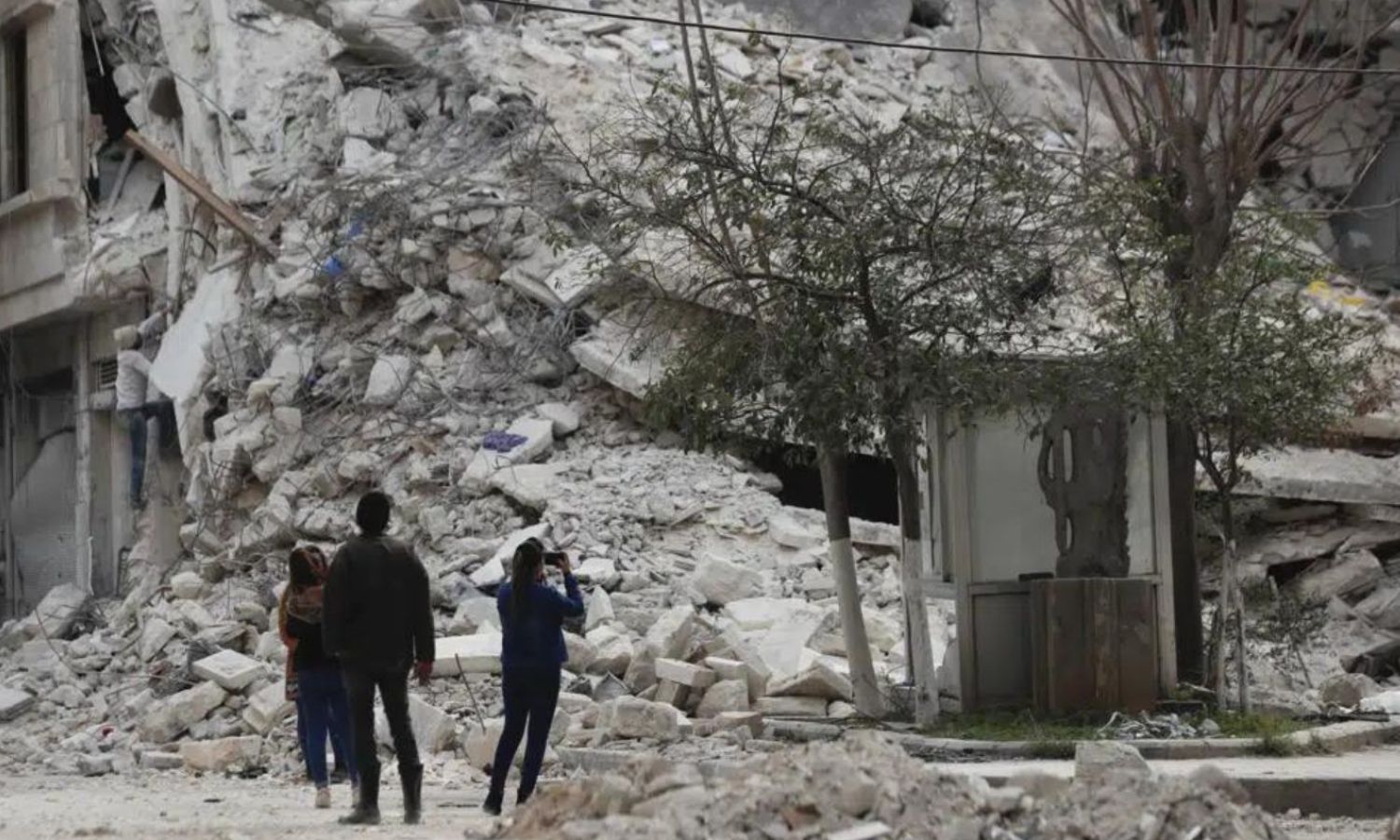The powerful earthquake that hit four Syrian governorates on February 6 exacerbated the already dire housing and shelter crisis that has been plaguing most governorates in Syria for years, and this is expected to have significant effects on the real estate market in the short and long term.
In recent years, the real estate market in regime-controlled areas of Syria has been stagnant due to the high prices of building materials and residents’ lack of purchasing power. This has led to an oversupply of properties that do not match demand, with many residents wanting to emigrate for various reasons. The recent earthquake has further compounded this crisis, exacerbating the housing and shelter crisis in affected governorates and impacting the real estate market in the short and long term.
The negative impact of the earthquake on the real estate market in Syria is evident in various indicators, with no visible solutions to the current crisis. The market has been stagnant for the past years due to the unprecedented rise in the prices of building materials, lack of purchasing power among residents in regime-controlled areas, and a significant rise in supply that does not match demand, mainly due to the desire to emigrate. The current crisis raises concerns about the market’s ability to meet the housing and shelter needs resulting from the earthquake.
Psychological and engineering factors
In an Op-ed published by Al-Modon at the end of February, Syrian researcher Iyad al-Jaafari considered that, based on previous experiences in real estate markets in areas affected by natural disasters, especially earthquake, demand for real estate usually decreases.
The researcher has pointed out that the decrease in demand is due to psychological reasons related to the loss of confidence in the durability of constructions and their ability to protect the lives of residents in the event of an earthquake.
Joseph Daher, an associate professor at the European University Institute in Florence, Italy, told Enab Baladi that the stagnation of the real estate market due to psychological factors might only be temporary. After this period, the real estate market is likely to be affected by the same factors that have impacted it for the past few years.
Daher explained that the real estate market situation in Syria has not changed much from what it was before the earthquake disaster in terms of the movement of real estate purchases. However, he noted that there could be changes in the movement of rents, with values potentially rising in areas directly affected by the earthquake.
Dr. Firas Shaabou, an expert in financial and banking sciences, told Enab Baladi that if buildings are constructed according to earthquake standards in the future, the real estate market will experience even more stagnation and rigidity due to the high costs of construction, which will lead to an increase in real estate prices. However, he added that this is a necessary step to ensure the safety of residents in the event of future earthquakes.
According to the latest statistics released by the Syrian regime’s government, the number of residential buildings that collapsed directly in the affected governorates at the moment of the earthquake was 199, but the extent of the destruction caused to industrial facilities, factories, and other workshops is not yet known.
Technical committees for engineering inspection were formed by the regime government in the affected governorates from the first day to assess the condition of partially damaged buildings. Following the assessment, it was decided to demolish 292 buildings that were deemed to be at risk of collapsing. The government also promised to provide compensation to affected residents and to support the reconstruction process.
According to the latest report issued by the “Supreme Relief Committee” led by the Minister of Local Administration and Environment, Hussein Makhlouf, there are 4,444 unsafe and unsupportable buildings, 29,751 buildings that need to be strengthened to become safe to return, and 30,113 safe buildings that require maintenance. The report was based on the results of engineering inspections carried out by technical committees formed by the regime government in the affected governorates.
This article was translated and edited by The Syrian Observer. The Syrian Observer has not verified the content of this story. Responsibility for the information and views set out in this article lies entirely with the author.


